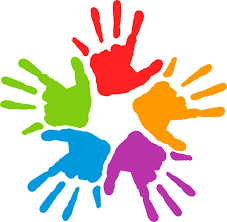
In Society and Lifestyle, in todays input through the lecture, seminar and independent tutorial I have gathered and developed my thoughts and questions about people with disabilities and their experiences in society on inclusion and equality. Disability is number two of the nine characteristics protected against discrimination by the Equality Act 2010. I find this topic extremely interesting to read about and how being disabled can cause unfairness, I feel that it is crucial for society to treat everyone the same and give everyone equal opportunities. From looking back at ancient times, the treatment of people with disabilities was horrifying by many people being persecuted or killed just because they had a disability. In todays 21st century it is becoming an increasing matter that we as society must learn to create a new reality and ways of being.
Many people argue the matter that impairments themselves cause the disability by preventing them doing usual day to day activities, however, personally I believe that it is in fact the physical environment that surrounds us that causes magnificent ways of living and problems with those that live with a disability they find restrictions almost everywhere around them. I agree with Mel Ainscow belief that assumptions of people with disabilities are not intellectually developed and that those living with a disability should be moved into the mainstream environment to allow everyone to have fair and equal opportunities in the world.
In addition to this, I find the ‘universal design’ a very crucial and interesting concept that hopefully in years to come will be put in place in several buildings to create an equal and fair environment of use for everyone. This will allow people to treat everyone the same as they don’t have barriers separating the disabled and the privileged.
‘The opportunity of adversity’ a TED TALK video that was filmed in October 2009 by Aimee Mullens who truly believes there is no such thing as ‘normality’. Everyone has their different opinions and attitudes, beliefs, likes and attitudes. Nothing is considered as ‘normal’ as everyone is different. Society must learn to appreciate and value everyone instead of shaming and looking down on people who maybe look different or speak different to everyone else.
I feel that this is a strong topic that I still need to look into further. I feel that as a student and hopefully as an educator in the future I will gather these thoughts and be able to treat all my pupils equally. John Ravis belief is to be able to suit everyone in society we must look at the least advantaged first and consider what and how we would provide for them first. I will do just this in my classroom for an equal class environment for my pupils to earn in.
 After this weeks lecture the main concepts that I have learned are the definitions and understanding of Inclusion and Equality. Before this input, I had previous knowledge on equality and inclusion from school however, I was always thought inclusion and equality was of similar meanings now I know they are in fact completely different. I feel that I now understand the importance of these terms and how they effect society in various different ways. I found equality most interesting to read about and fully understand the key information.
After this weeks lecture the main concepts that I have learned are the definitions and understanding of Inclusion and Equality. Before this input, I had previous knowledge on equality and inclusion from school however, I was always thought inclusion and equality was of similar meanings now I know they are in fact completely different. I feel that I now understand the importance of these terms and how they effect society in various different ways. I found equality most interesting to read about and fully understand the key information.